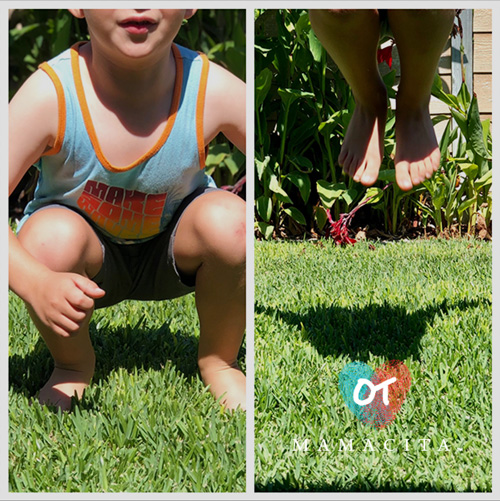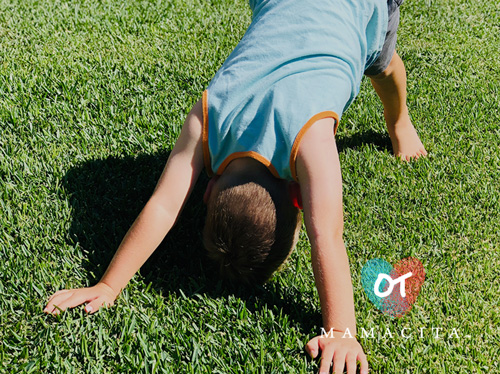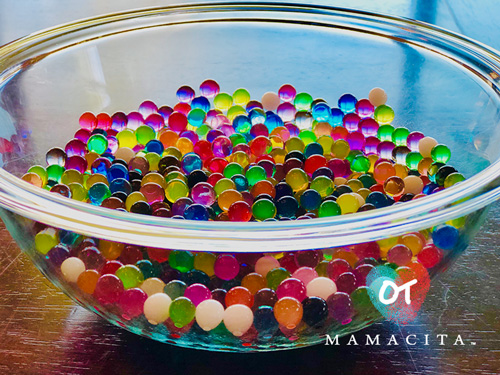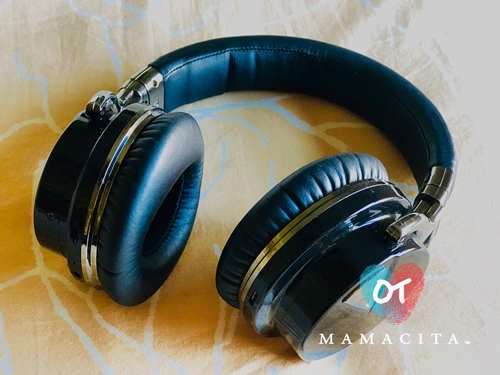What Is a Sensory Diet?
Posted by Guest Blogger Kristen Cooper, MS, OTR/L on 12th Aug 2019
This introduction to sensory diets is courtesy of Kristen Cooper, MS, OTR/L aka OT Mamacita.
The term “sensory diet” has become more popular in recent years, but the understanding of what it is, let alone how to develop one, may not be clear to parents and educators. Contrary to its name, it is not a diet of food you eat, rather, it is like the concept of a diet wherein you need adequate sensory input throughout the day in order to remain in a "just right" kind of state. Being in the "just right" state allows one to pay attention in school, sit at the table to eat a meal, or participate in a family outing.
The following is a brief overview of our sensory systems, as well as a basic outline of how to incorporate sensory strategies in your day. Please consult an occupational therapist with sensory integration background if you feel your child or loved one requires intervention related to sensory processing.
To understand how to develop a routine of effective sensory strategies into your everyday routine, it's best to begin with a basic overview of the 5 sensory systems. You can incorporate suggestions for activities from one category, or all categories, and play around with which suggestions are most effective at regulating your sensory systems. Because we all interpret sensory input differently, it’s important to note that effective strategies will be unique to every person.
.

.
Proprioception: This refers to your sense of body awareness and position in space. This input is dependent upon feedback from receptors located in your muscles and joints and can be activated by activities such as climbing, jumping, stomping, chewing, pulling, and dragging. Proprioceptive input is typically calming and organizing for people.
.

.
Vestibular: The vestibular sense depends on receptors in your inner ear which detect changes in head position and give your body information about your head position in space. This sense is activated by activities such as swinging, sliding, spinning, riding a bike, or riding a roller coaster. Vestibular input can be calming (think slow, rhythmic swinging), or it can be alerting (think rapidly spinning, or unwinding from a wound-up swing).
.

.
Tactile: This is our sense of touch, which is also dependent upon receptors in our skin. Deep pressure, as in from a massage, weighted blanket, or firm touch from someone, activates this sense. Tactile input is typically calming and organizing, but light and quick touch can be alerting (as in toweling off quickly).
.

.
Auditory: Auditory input (sound) can be perceived differently by different people - some may find the sound of clanging dishes or the hum of the heater to be overwhelming, while others may perceive the sound of a ringing school bell as unbearable. With regards to a sensory diet, auditory input can be controlled by tools (using noise-cancelling headphones or a white noise machine) or coping mechanisms such as covering your ears.
.

.
Visual: Visual input (what we see) may be overwhelming for some, while it may not be intense enough for others. This can cause one to look around the room, rather than at the source of instruction, or it may cause one to become hyper-focused on visual details to the exclusion of other visual information. Visual input can be controlled by wearing sunglasses, a hat, or using a privacy corral to limit visual distractions. Screen time can also be visually overwhelming, so monitor its use as well.
.
Now, how do you build a basic sensory diet?
- Understand which activities might be alerting or calming for the person who the sensory diet is developed for. This is where the expert eye of an occupational therapist may be required. Different input has different effects, meaning for some, a particular form of input can be alerting, or it can be calming. However, you can still observe your child’s behavior and implement sensory strategies based on what you’re trying to achieve, such as helping them to feel calm. (A list of suggested activities is at the end of this blog post).
- Pick 4-5 sensory activities to implement on a regular basis, or at different parts of the day when needing to be in the "just right" state. I recommend also choosing those that have been effective in the past, such as chewing, taking a brief walk, listening to calming music, jumping on a trampoline, or helping to carry in groceries.
- Use a system of implementation that works for you, meaning, will you use visuals (pictures of the items or activities), make a list, or just keep mental notes?
- Recognize the signs of needing a sensory strategy and implement a strategy. This will help develop the right formula of when to implement your strategies, and what type of input is needed. For instance, if your child becomes overly excited in a large gathering, you can engage them in a calming activity such as chewing (chewy item, gum, or food), giving them deep pressure to their shoulders or arms (gently pressing down) or having them hug themselves. Another example of implementing a sensory strategy at a time when needing to be more alert for an activity (such as sitting in class for 20 minutes or preparing to do homework) would be engaging in vestibular or proprioceptive activities such as jumping in place for 30 seconds, taking a quick walk, or squeezing your hands together and holding for several seconds.
.
Following is a list of suggested sensory activities that can be incorporated into your everyday routine. As aforementioned, please consult with an occupational therapist with advanced training in sensory processing in order to better determine their unique sensory needs.
.
Proprioceptive:
- Carry something heavy (groceries, a backpack with a few books inside, a watering can, stack chairs at the end of the day, carry the laundry basket)
- Push or pull something (a stroller, moving chairs, a lunch cart, loaded wagon, a laundry basket)
- Sweep or mop the floor
- Wipe down the table or wipe the windows
- Visit a playground and encourage jumping, climbing, and hanging from the bars
- Crawl (through a tunnel, pretending to be an animal)
- Swim
- Jump—in place, from a sturdy and elevated surface, or by doing jumping jacks
- Suck through a straw (water, milkshake, smoothie, etc.)
- Chewing (ARK chewy items, gum, crunchy/chewy foods such as celery, carrots, apples, beef jerky, licorice, gummy bears, etc.)
.
Vestibular:
- Swing (back and forth motion is calming, while rotary or circular movement, think tire swing, is alerting)
- Ride a bike
- Gymnastics or tumbling activities (somersaults, cartwheels)
- Roll down a hill
- Jumping jacks
- Hang upside down
- Jump on a trampoline
- Bear walks (walking with arms on the ground, head down) or wheelbarrow walks
.
Tactile:
- Gentle, firm massage applied to the shoulders, head, arms, hands, and/or feet
- Burrito roll up--wrap your child in a blanket (head exposed, not too tight)
- After bathing, apply lotion with a gentle but firm massage
- Go barefoot in the grass or sand
- Play with tactile materials that are messy, wet, or sticky (Play-doh, slime, water beads, wet sand, crafts using glue or paint)
.
Auditory:
- Wear headphones, earbuds, or earplugs if noises are bothersome or loud noises are expected
- Listen to quiet music to promote calm, or listen to upbeat or loud music to increase alertness
- Turn off the noises--turn off the TV, music, close the windows, find a quiet place in your space or home
- Utilize white noise machines or apps to drown out bothersome or extraneous noise
.
Visual:
- Wear sunglasses when out in bright sunlight
- Wear a hat
- Decrease clutter or environmental business by putting things away or using storage containers
- Monitor screen time with visually busy images and graphics
- Use a privacy board/corral or turn to face a plain wall when needing to decrease or limit visual distractions
.
OT Mamacita
Kristen Cooper, MS, OTR/L earned her Bachelor’s Degree from Georgetown University and her Master’s Degree in Occupational Therapy from California State University Dominguez Hills. She has spent over a decade working with children with developmental disabilities in both the private sector and school settings and has advanced training in sensory integration, including certification in the Sensory Integration and Praxis Test, and developmental handwriting curriculum. Kristen also has a passion for infant and child development including feeding. She currently provides consultative services to families and children to support them living their lives to the fullest. Kristen resides in Southern California with her husband and two young children, the loves of her lives and muses for @OTmamacita. OTmamacita.com

.
